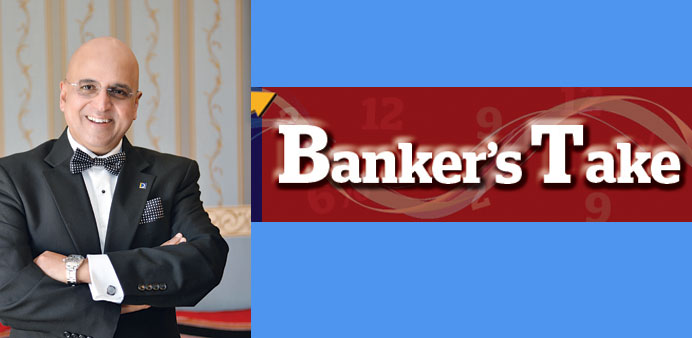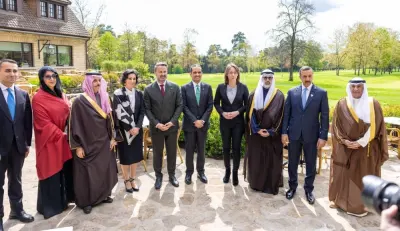According to the IMF October 2016, global growth is projected at 3.4% in 2017. The global economic recovery eight years after the global financial crisis is still fragile.
The US economy is expected to grow at 2.2%. Key areas to look for in 2017 are Trump’s expansion plan after the Fed has indicated three rate hikes this year. Trump’s expansion plan will determine the Fed’s adherence to its rate hike plans.
Euro growth for 2017 is expected to be 1.5%. The elections in France and Germany are important this year. UK growth for 2017 expected at 1.1% as Brexit discussions progress. “We need to see whether Article 50 be triggered by end of 1st quarter of this year.
Japan economy is expected to grow in 2017 to 0.6%. China’s growth outlook is at 6.2% in 2017. We need to see whether the yuan weakness still continues this year. India’s growth is revised to 7.6% for 2017, which could see further pressure on account of demonetisation.
Brazil’s economy remains in recession, but activity appears to be close to bottoming out. A return to positive growth in 2017 of 0.5%. Russia is now projected in 2017 at 1.1%.
Oil prices are higher as a tighter market looms in 2017 due to planned output cuts led by Opec and Russia. However, we also need to watch on shale oil developments.
Gold will remain in pressure if the Fed continues its hikes in line with its plan. Dollar will continue to be a winner in 2017 with Euro and Pound remaining in pressure. However, key to watch is Trump’s expansion plan which will determine the Fed’s action and the dollar direction.
According to the IMF’s October 2016 outlook, Saudi economy is expected to grow by 1.98% in 2017, the UAE economy is expected to grow by 2.5%, Qatar’s economy by 3.4%, Oman economy by 2.6% and Bahrain economy by 1.76% respectively.
The 2016 had begun amid a sharp cut in fuel subsidies in Saudi Arabia, Qatar, Bahrain and Oman, following a lead set by the UAE in 2015, accompanied by a series of rises in the price of water and electricity throughout the region.
Such subsidy cuts, due to continue throughout the region in 2017, will see business costs rise, with the risk of a backlash in some countries.
Lower oil revenues have resulted in decline in government deposits in banks. On the banking sector, more rate hikes are expected in the GCC in 2017, as the GCC central banks mirror the US Fed’s action.
A new rate rise will mean that they will have to apply higher interest rates on consumer loans. Consumers tapping personal loans and mortgages are likely to pay more for their money as well.
Tourism-facing sectors such as hospitality and retail will also be hit as customers from countries with weaker currencies against the strong dollar become more cost-conscious.
Exporter’s can also feel the effect of a stronger dollar. The low oil prices has created a tighter liquidity scenario in the GCC and they always need more easing measures to stimulate the economy, create investment and reduce deflationary pressures.
The SME sector, which had experienced an increase in loan defaults on account of low oil prices, will further feel the strain on account of higher borrowing costs.
Liquidity pressure is expected to remain in 2017. The funding of GCC banks remains anchored by low-cost deposits, a credit strength, but it is under pressure because of decelerating deposit growth.
On an average, deposits provide 70% to 85% of non-equity funding. Deposit growth is expected to slow further in 2017. This will increase banks’ reliance on more costly deposits and market funding, increasing loan-to-deposit ratios and drive higher funding costs.
In recent times the borrowings by GCC sovereigns from international market and a little bit higher oil prices have eased the funding squeeze and thereby money market rates have not reacted much to the US Fed rate hike.
However, the GCC governments are further preparing to raise billions of dollars in debt to plug deficits that have been swelled by falling oil prices. It means that both GCC governments and corporates will pay more to raise debt from bond market.
Qatar has recently announced its budget of 2017, in which it has a deficit of QR28.3bn. The shortfall is expected to be covered by issuing debt instruments in the local and international financial markets, while maintaining its reserves and investments.
The rising interest rates find the GCC region in a different economic cycle than the US on account of low oil prices and their widening fiscal deficits.
The region’s economies will be more affected by the pace of fiscal and structural reforms than just the cost of capital. The fiscal reforms are expected to continue in the GCC amidst uneven global economic recovery.
*Dr R Seetharaman is Group CEO of Doha Bank.

see


